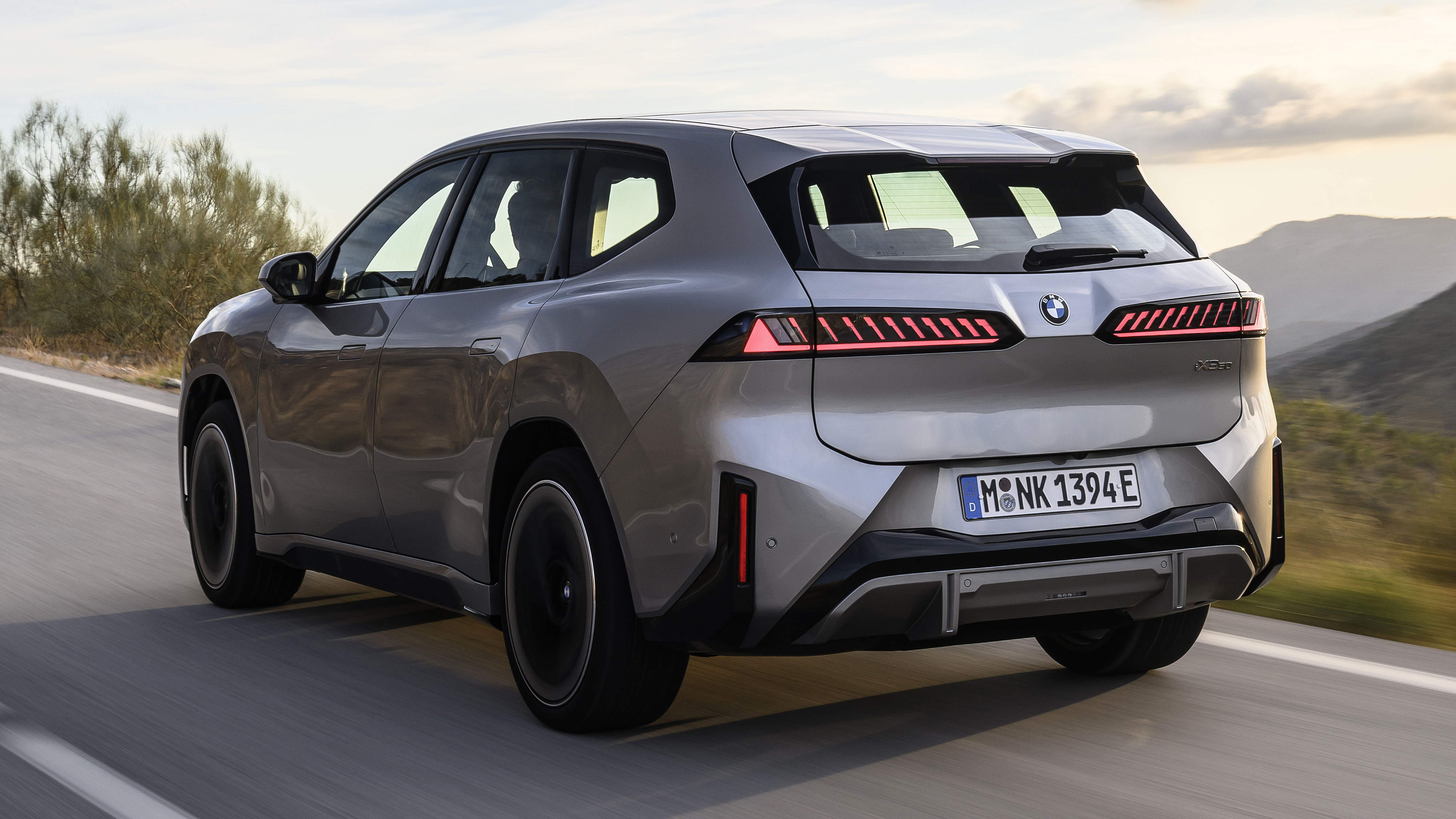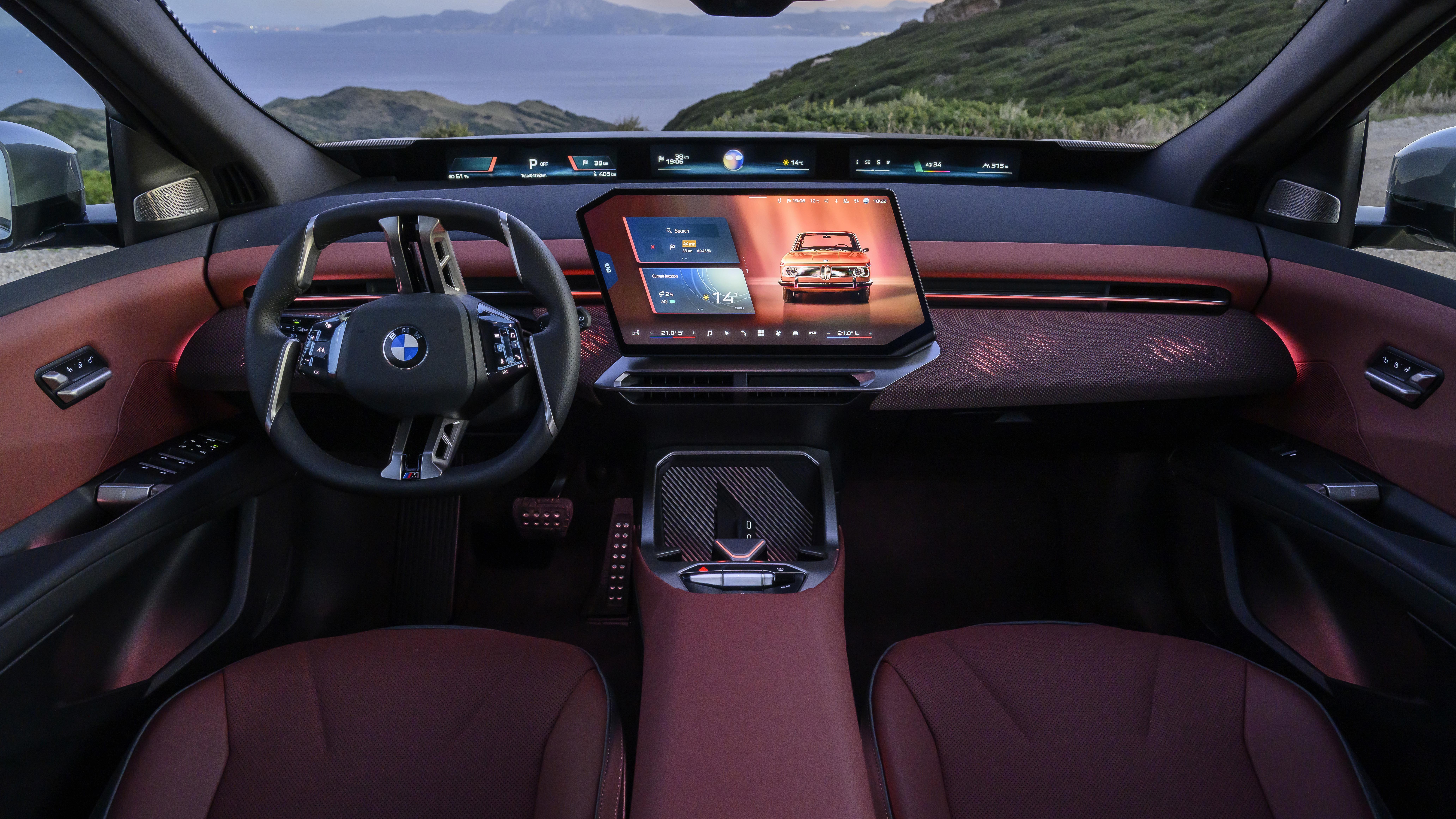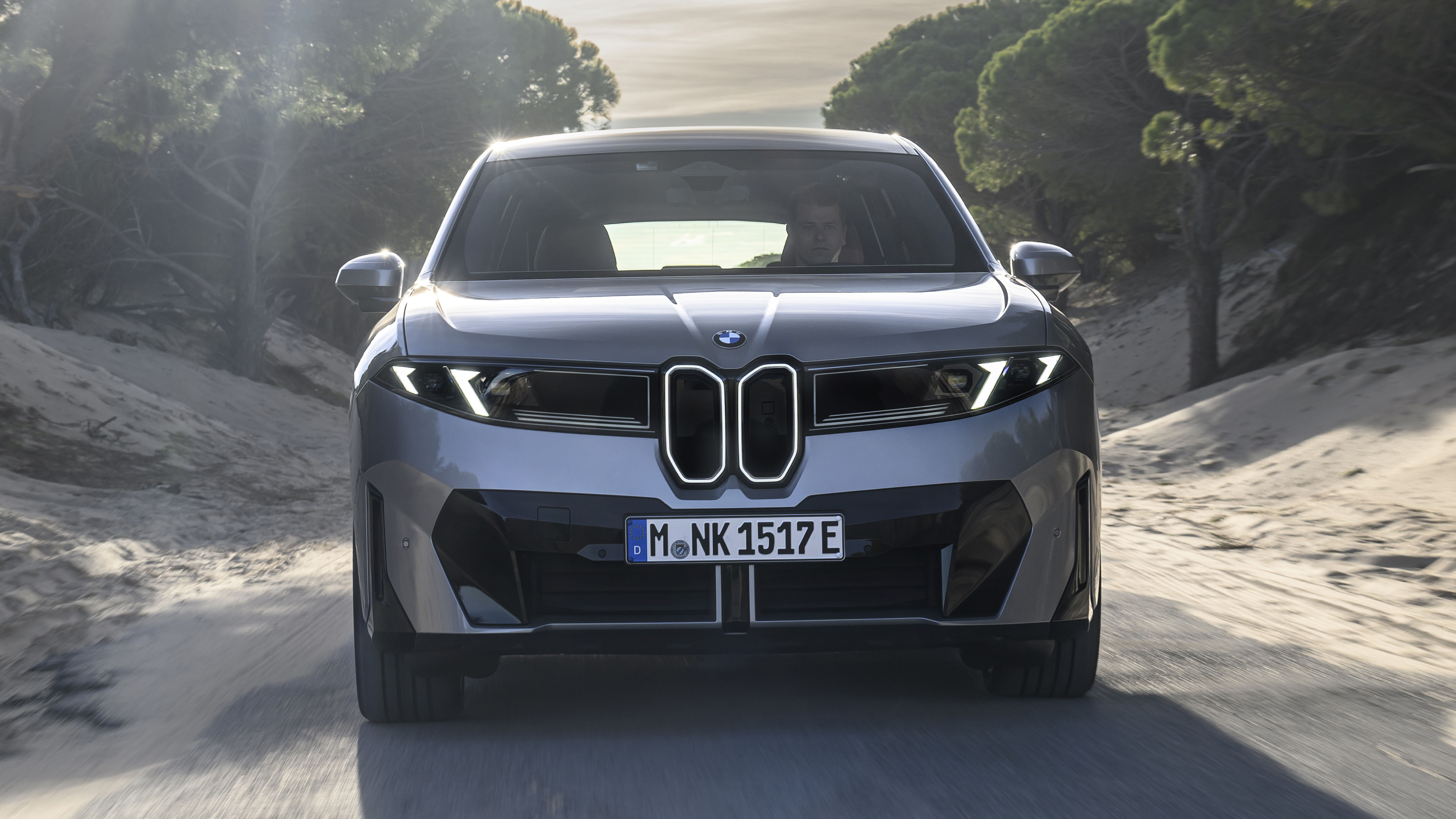
Interior
What is it like on the inside?
What’s going on with this full-width head-up display thing?
BMW calls it Panoramic iDrive. Its first wow is a shallow display running the entire way across the base of the windscreen just above the dash (it's actually a reflected image in the blacked-out strip of the glass that hides the parked wipers). That contains useful configurable widgets, plus the driver's display itself – speed, navigation arrows, battery per cent, warning lights etc.
So there's no separate driver's display. The wheel is smaller and you don't have to drop your eyes to see under the rim. Sorta like the Peugeot idea, but because the display is higher we reckon more people will be comfy with it.
Then a big central tablet, a uniquely six-sided shape. Don't worry, its oblique outline will be reversed for RHD. Everyone in the car can see the pano display and the tablet. Plus, there's a handy HUD for the driver.
Yes, it works. The icons are big enough that it's quick to distinguish and jab at them. Everything acts snappily. It's clear. You can use steering wheel buttons to do much of what the controller wheel used to do. Finally, the voice recognition is excellent and knows who's speaking, so 'warm me up' or 'turn on my light' will do it for just that person's seat.
How much space is there in the back and boot?
More than you’d expect given it’s got practically the same footprint on the road as the old iX3, and yet you get 520-litres of space with the back seats up, expanding to 1,750-litres with them folded down. That’s versus 510/1,560 in the old one, plus you now get a 58-litre froot under the front bonnet – the joy of a dedicated EV platform knows no bounds.
You can also add an electrically operated tow bar and haul up to 2,000kg with the 50 xDrive model – not such a silly exercise given you now have such an enormous 500-mile WLTP rating, so even with a slashed range, you’ll still be able to do a few hundred miles between stops.
And what about the quality?
Top drawer. The new steering wheel can be ordered with a variety of spoke designs, all are small and chunky as is BMW’s way, but feel great in your hands thanks to pronounced thumb rests. The redesigned seats strike a good balance between comfort and bolstering and the rear bench seat has improved legroom and is basically a big sofa in the back. Just what you want for carting about the family.
No phone shall go uncharged either, with a pair of wireless pads in the front, many USB-C ports dotted about and a 12V outlet inside the central armrest storage bin. You’ll find more storage under the floating centre console, too.
Featured

Trending this week
- Car Review
BMW iX3






